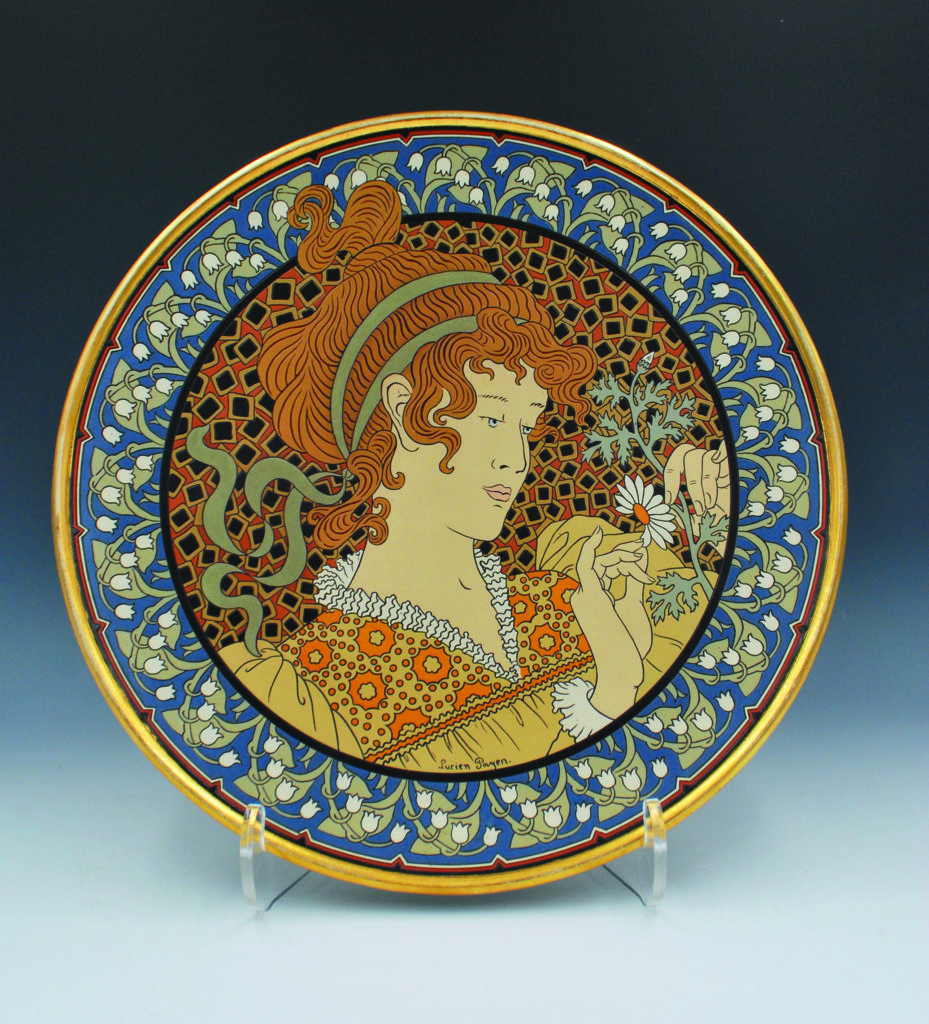
Exhibition Closes: June 11, 2023
Villeroy and Boch was founded in 1836 when a French ceramics company founded by Jean François Boch (1782-1858) merged with a German ceramics company started by Nicolas Villeroy (1759-1843). The merging of the two companies reduced competition between them and allowed them to increase production while lowering overall cost, thus growing the size of their combined markets. The merger also leveraged their competitive strength against popular ceramic imports from England and Asia.
During this time, Europe was also becoming increasingly industrial, and advancements in technology made the manufacturing of goods more efficient and less expensive. Widespread industrialization brought prosperity to Europe, helping to establish a growing middle class interested in everyday consumer goods.
Villeroy and Boch’s Mettlach factory, located in Mettlach, Germany near the French border, was one of the company’s most productive factories. The Mettlach factory was housed in a restored former Benedictine Abbey dating back to the 10th century. Between 1880 and 1910, the Mettlach factory reached the pinnacle of its production, and this period is often considered the Golden Age of Mettlach.
Although Mettlach wares were mass-produced in a factory setting, internal company innovations created exciting new opportunities to combine art and industry. In addition to the highly skilled factory workers the company employed to aid in production (1,250 at its peak), Villeroy and Boch also employed a large number of artists and designers to create the artwork on the ceramic wares. Though many pieces are unsigned, some Mettlach pieces carry the mark of their artist. Mettlach designs were either created by resident artists or guest artists commissioned specifically for the Mettlach factory. This exhibition features some of the artists and designers that contributed to the prestigious Villeroy and Boch brand.
Mettlach employed artists from a variety of artistic and vocational backgrounds, working in a wide range of artistic styles. The artists of Mettlach typically worked in residence at the factory for periods of several months or years. In some instances, entire careers were devoted to working for Villeroy and Boch. Many of Mettlach’s artists worked in their own unique styles, producing some of Villeroy & Boch’s most memorable designs.
Unfortunately, recorded information about lesser known artists is scarce because of a fire at the Mettlach factory in 1921, which destroyed most records about artists and production techniques. Despite this lack of written history, Mettlach experts have been able to identify particular artists from posters, postcards, and from existing Mettlach pieces. Some artists clearly signed their work with their full name, while others incorporated a symbol or their initials within the artwork.